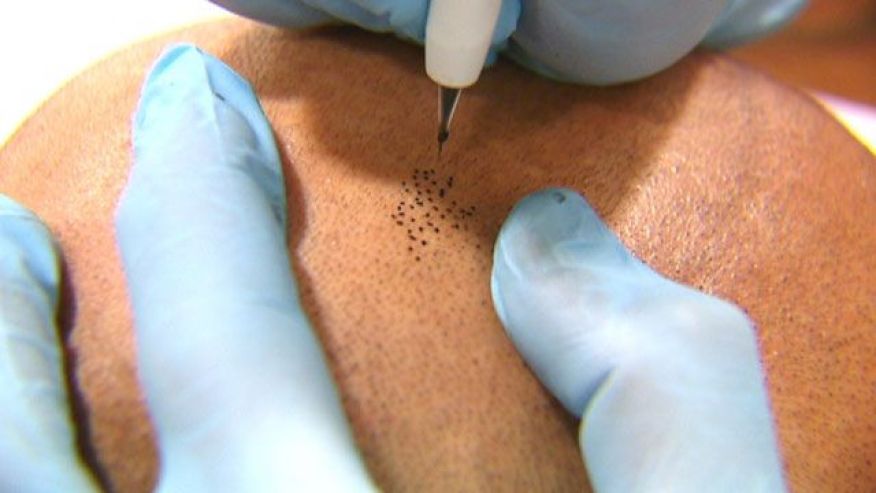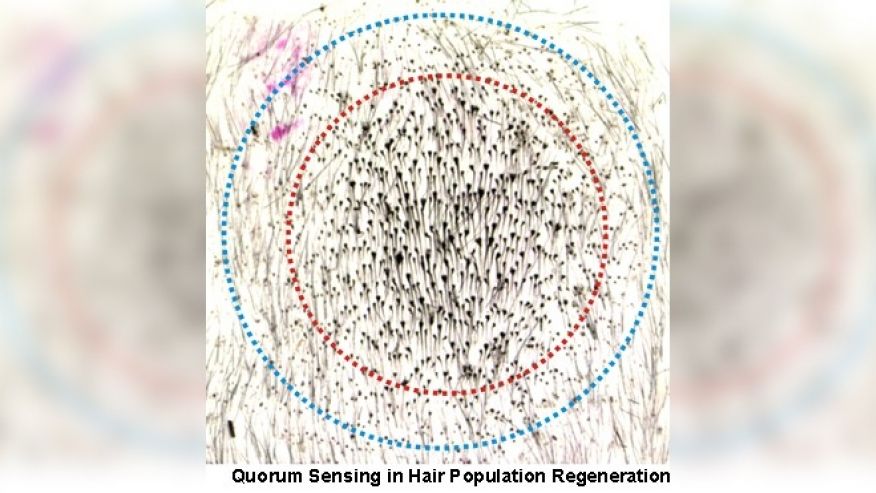
Researchers from the Perelman School of Medicine at the University of Pennsylvania have identified an abnormal amount a protein called Prostaglandin D2 in the bald scalp of men with male pattern baldness, a discovery that may lead directly to new treatments for the most common cause of hair loss in men. In both human and animal models, researchers found that a prostaglandin known as PGD2 and its derivative, 15-dPGJ2, inhibit hair growth. The PGD2-related inhibition occurred through a receptor called GPR44, which is a promising therapeutic target for androgenetic alopecia in both men and women with hair loss and thinning.
The study is published in Science Translational Medicine.
Male pattern baldness strikes 8 of 10 men under 70 years old, and causes hair follicles to shrink and produce microscopic hairs, which grow for a shorter duration of time than normal follicles.
Researchers took an unbiased approach when scanning for potential biological causes of baldness, looking in scalp tissue from balding and non-bald spots from men with male pattern baldness and then corroborating findings in mouse models. They found that levels of PGD2 were elevated in bald scalp tissue at levels 3 times greater than what was found in comparative haired scalp of men with androgenetic alopecia. When PGD2was added to cultured hair follicles, PGD2-treated hair was significantly shortened, while PGD2‘s derivative, 15-dPGJ2, completely inhibited hair growth.
“Although a different prostaglandin was known to increase hair growth, our findings were unexpected, as prostaglandins haven’t been thought about in relation to hair loss, yet it made sense that there was an inhibitor of hair growth, based on our earlier work looking at hair follicle stem cells,” said George Cotsarelis, MD, chair and professor of Dermatology, and senior author on the studies. In a Penn study published in the Journal of Clinical Investigation last year, underlying hair follicle stem cells were found intact, suggesting that the scalp was lacking an activator or something was inhibiting hair follicle growth.
Prostaglandins are well characterized for their role in many bodily functions — controlling cell growth, constricting and dilating smooth muscle tissue — and a different prostaglandin (F2alpha) is known to increase hair growth. Researchers found that as PGD2 inhibits hair growth, other prostaglandins work in opposition, enhancing and regulating the speed of hair growth.
While these studies looked at AGA in men, the researchers noted that prostaglandins may represent a common pathway shared by both men and women with AGA. Future studies, potentially testing topical treatments that may target GPR44, can determine whether targeting prostaglandins will benefit woman with AGA as well.
The research team consisted of Dr. Cotsarelis, lead author Luis Garza, MD, PhD, (former post-doctoral fellow at Penn, now at Johns Hopkins University School of Medicine) and Yaping Liu (now at Merck & company), Zaixin Yang, Brinda Alagesan, Scott Norberg, Tailun Zhao, Hanz Blatt, from Penn’s Dermatology department; Garrett FitzGerald and John Lawson from Penn’s Department of Pharmacology and the Institute for Translational Medicine and Therapeutics; David Stanton and Lee Carrasco from Penn’s Department of Oral and Maxillofacial Surgery and colleagues at Gillette, and University of Texas M.D. Anderson Cancer Center.
The study was funded by grants from the National Institutes of Health (R01-AR46837, P30-AR057217, 5R01AR055309 and K08AR055666, 5-P30-AR-057217-02), the Pennsylvania Department of Health, the Edwin and Fannie Gray Hall Center for Human Appearance at Penn Medicine, American Skin Association, Dermatology Foundation and L’Oreal. Drs. Cotsarelis and Garza are co-inventors on a patent owned by the University of Pennsylvania describing the PGD2 pathway as a target for inhibiting hair loss.
[Source:- Sciencedaily]


















